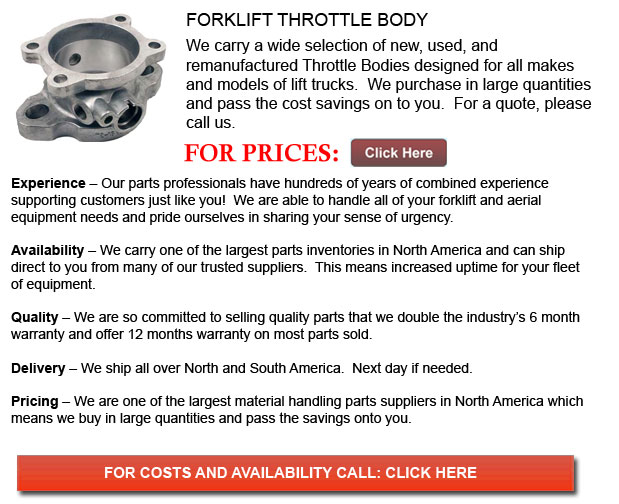
Throttle Body for Forklifts - Where fuel injected engines are concerned, the throttle body is the component of the air intake system that regulates the amount of air that flows into the motor. This particular mechanism operates in response to driver accelerator pedal input in the main. Generally, the throttle body is situated between the intake manifold and the air filter box. It is often connected to or situated close to the mass airflow sensor. The largest part within the throttle body is a butterfly valve referred to as the throttle plate. The throttle plate's main task is to control air flow.
On several styles of automobiles, the accelerator pedal motion is communicated through the throttle cable. This activates the throttle linkages that in turn move the throttle plate. In vehicles with electronic throttle control, likewise known as "drive-by-wire" an electric motor regulates the throttle linkages. The accelerator pedal connects to a sensor and not to the throttle body. This sensor sends the pedal position to the ECU or also known as Engine Control Unit. The ECU is responsible for determining the throttle opening based upon accelerator pedal position along with inputs from different engine sensors. The throttle body consists of a throttle position sensor. The throttle cable connects to the black portion on the left hand side that is curved in design. The copper coil located next to this is what returns the throttle body to its idle position after the pedal is released.
Throttle plates turn inside the throttle body every time pressure is applied on the accelerator. The throttle passage is then opened in order to permit more air to flow into the intake manifold. Usually, an airflow sensor measures this alteration and communicates with the ECU. In response, the Engine Control Unit then increases the amount of fluid being sent to the fuel injectors so as to generate the desired air-fuel ratio. Often a throttle position sensor or TPS is fixed to the shaft of the throttle plate to provide the ECU with information on whether the throttle is in the wide-open throttle or "WOT" position, the idle position or anywhere in between these two extremes.
Several throttle bodies could have adjustments and valves in order to regulate the least amount of airflow during the idle period. Even in units which are not "drive-by-wire" there will often be a small electric motor driven valve, the Idle Air Control Valve or IACV that the ECU uses in order to control the amount of air that can bypass the main throttle opening.
It is common that many automobiles have a single throttle body, although, more than one can be utilized and attached together by linkages so as to improve throttle response. High performance vehicles like the BMW M1, together with high performance motorcycles like for example the Suzuki Hayabusa have a separate throttle body for each cylinder. These models are referred to as ITBs or otherwise known as "individual throttle bodies."
The carburator and the throttle body in a non-injected engine are quite similar. The carburator combines the functionality of both the throttle body and the fuel injectors together. They could control the amount of air flow and mix the air and fuel together. Cars which have throttle body injection, that is known as CFI by Ford and TBI by GM, situate the fuel injectors within the throttle body. This allows an older engine the chance to be transformed from carburetor to fuel injection without significantly altering the design of the engine.
![]() Click to Download the pdf
Click to Download the pdf
Forklift Parts
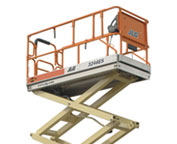
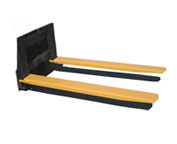
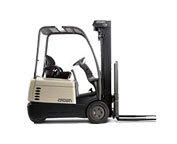
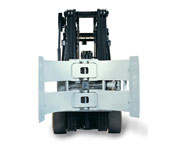
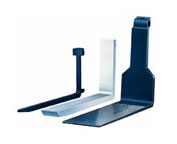
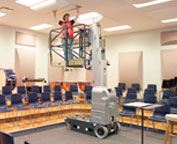
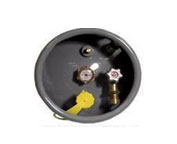
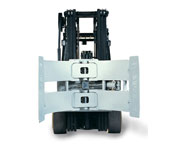
Lift Parts Express
TOLL FREE: 1-888-695-7994
LOCAL: 909-265-9036
985 KENDALL DR A-306
San Bernardino, California
forkliftpartssanbernardino.com
Email Us
About Us


